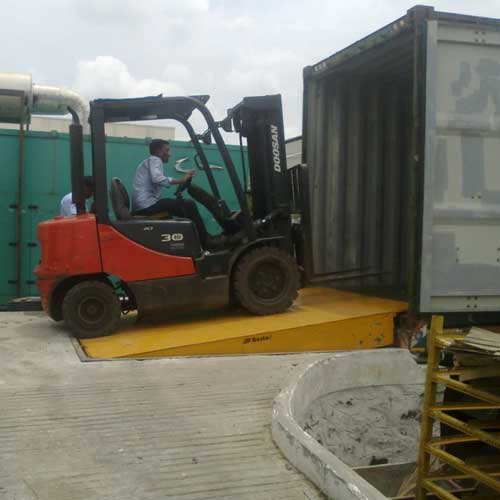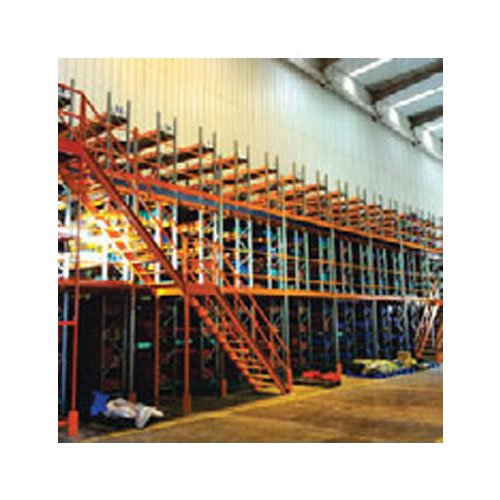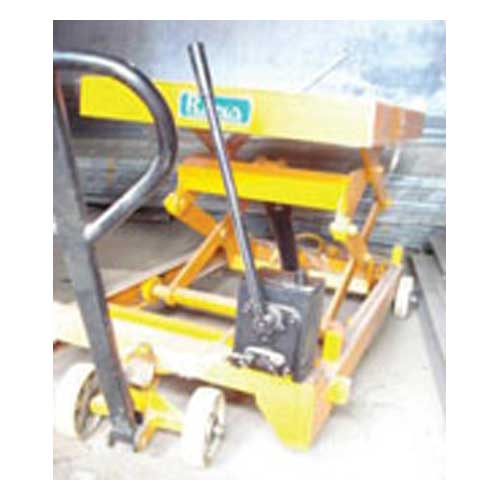Schedule a Call Back
Asset tracking systems give warehouses a competitive edge
 Articles
Articles- Mar 01,23

Warehouse operations are essential to functional supply chains, but many struggle with inefficiency and errors. Asset tracking systems — which provide real-time data on warehouse assets — their conditions and locations, can help organizations overcome those challenges.
Many warehouses still rely on manual methods to track their inventory and equipment. By moving to a digital system, logistics companies can reap significant benefits, gaining a critical edge over their competitors in the process.
How asset tracking systems improve warehouse operations
Asset tracking systems provide a centralised window to view real-time information on everything from packages to forklifts. This insight enables several key advantages across the warehouse.
Higher efficiency
Real-time monitoring of warehouse assets lets teams work more efficiently. When employees can see exactly where everything is at all times, they can save considerable time they would otherwise spend looking for assets.
Picking workflows have some of the most to gain from these efficiency improvements. Order pickers can spend up to 85 per cent of their time walking through shelves, searching for items. Asset tracking systems can guide them along the most efficient route to get to the package they need, eliminating wasted time.
Workers can accomplish more in a workday as they minimize lost time from unnecessary travel and searching. Consequently, warehouses can maximize their output by improving their visibility through real-time asset tracking.
Fewer Errors
Using a digital asset tracking solution instead of manual methods also reduces the risks of employee error. Manually recording asset locations, conditions and other factors is repetitive, detail-oriented work, which makes it prone to mistakes. Digital asset tracking platforms upload this data automatically and update it in real-time, eliminating the potential for these inaccuracies.
Manual data entry error rates hover around 1 per cent on average, which seems small until businesses consider the scale most warehouses operate at and how little factors can add up over time. By minimizing the human role in this record-keeping, warehouses can take that figure to virtually zero. When that happens, they ensure they ship the correct orders and save time correcting mistakes.
Ongoing Improvements
As companies track their warehouse assets over time, they will generate valuable data points for ongoing improvements. Tracking solutions reveal three main types of data:
Types of Asset Tracking Systems
Companies wanting to capitalise on these benefits have several options to choose from. Many asset-tracking technologies exist today, each with unique strengths and weaknesses. Here are some of the most popular systems warehouses should know about.
GPS
Global positioning system asset tracking uses the same technology as vehicles’ GPS navigation systems. It offers real-time location services and has a virtually unlimited range, making it ideal for tracking trucks or shipments en route. However, it cannot support much data outside of location and speed, has low signal strength indoors and is relatively inaccurate for smaller assets.
Bluetooth
Bluetooth — specifically Bluetooth Low Energy (BLE) — is a more appropriate choice for tracking smaller warehouse assets like packages. BLE is highly precise and can transmit a wide range of information, so warehouses can use it for tracking conditions, not just locations. It also uses minimal power and is affordable, making it easier to implement.
Bluetooth ranges can technically reach more than a kilometer, but they typically only stretch up to 50 meters in most cases. That limited range may be an issue for some warehouses.
RFID
Radio-frequency identification is another standard technology for asset tracking systems. RFID tags use electromagnetic fields to transmit information. Many are passive, using no internal batteries, making them highly affordable and easy to implement. However, passive RFID has a limited range.
Active RFID tags are more expensive but can carry a broader range of information and transmit it further. These options are ideal for assets with real-time tracking needs, such as those sensitive to temperature changes.
Ultra-Wideband
Ultra-wideband (UWB) is a less common but helpful asset-tracking technology. UWB is similar to Wi-Fi but uses shorter pulses and higher frequencies, making it ideal for order-picking systems. UWB networks also have high bandwidth, letting them transmit considerable amounts of data, but their range is limited.
Asset Tracking Best Practices
To maximize these technologies, warehouses should not constrain themselves to one tracking system. Instead, they should use a mix of technologies for different products or workflows, like GPS tracking for their fleet and RFID for on-shelf inventories. This variety will help use each technology’s benefits to their greatest extent.
When determining which technologies and supporting asset tracking platforms to use, warehouses should start by outlining their needs and goals. Once businesses understand their budgets, efficiency goals, assets to track and expected outcomes, they can set relevant KPIs and find the optimal solution for their needs. Communicating these requirements with asset tracking system providers will help them find the ideal platform.
Finally, warehouses should start by applying asset tracking to the area that stands to improve the most. Financial barriers and lack of technological expertise are two of the most common obstacles to Industry 4.0, but slow, careful approaches resolve both. If warehouses start small and carefully learn what works and what does not before expanding, they can maximize their returns with this technology.
Tracking Warehouse Assets Provides Crucial Advantages
Warehouse asset tracking systems are critical tools for supply chain organizations today. As more facilities implement them, logistics operations will become faster, more accurate and less error-prone. Capitalizing on these benefits early could help warehouses surge past their competition before this technology becomes an industry standard.
About the author:
Emily Newton is a tech and industrial journalist and the Editor-in-Chief of Revolutionized Magazine.
Related Stories

The future promises fully autonomous warehouses: Manpreet Sachdev
In this interview, Manpreet Sachdev, Founder & CEO, Elite Material Handling Co, shares his views on growth, AI, and the future of India’s material handling industry.
Read more
TIL Ltd will launch new cranes and forklifts in next 4 years
Says Alok Kumar Tripathi, President, TIL Limited, in this interview while elaborating on the company’s future plans.
Read more
Why efficient material handling is essential for the success of Make in India
Indian manufacturers need well-managed warehouses amid global disruptions (like tariff wars and geopolitical tensions) to reduce costs and avoid delays. Hence, efficient material handling systems ar..
Read moreRelated Products

Dock Leveller
Besto Material Handling Equipments offers a wide range of dock leveller.

Multi Tire
SCI Storage Solution offers a wide range of multi tire.

Industrial Lifting Equipment
Rana Material Handling Equipments Pvt Ltd offers a wide
range of industrial lifting equipment.















